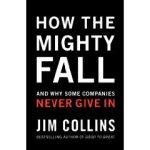Over the last two posts I’ve looked at the evidence that the HR profession is dead and I’ve listed some reasons to believe its still alive.
What do I really believe? HR is not dying, but it is changing. The forces driving the change are complex and because of their complexity the results of the change may be misunderstood. Let’s look at some of the forces driving the change in our profession:
1. Society is changing. The 500 year period that more or less started with the enlightenment in the western world, and that is referred to as modernity (at least from our perspective) seems to be drawing to an end. This is a natural, organic shift in thinking and seeing the world, not a cataclysmic end worthy of a blockbuster movie. Some examples of this shift include the growing number of people who think that “Might does not make right” or “Bigger is not better” or “Science doesn’t have all the answers”… The point here is not whether you agree with this line of thinking, but rather that a significant (and probably growing) number of people are thinking in post-modern ways. HR is recruiting, training and helping managers manage these post-modern employees, and they do not have the same value system as those who are still firmly rooted in modernity. Society’s changes force HR to change, and I believe these changes are having a profound effect on HR. However, if we are busy putting out fires, we may be missing the big picture.
2. Our profession is maturing. Beyond HR by Boudreau and Ramstad may be the best summary of this maturation process I’ve seen so far. Just like accounting matured into the decision science we call finance and sales matured into the decision science we call marketing, HR is maturing into a decision science that these authors call Talentship. We still have accountants and sales professionals, and we will probably still have professionals working on the issues common to today’s HR. But we are starting to see a new decision science emerge that has the promise of making tomorrow’s Talentship (or whatever name emerges) a key strategic partner in the post-modern organization. This is exciting and it’s frightening. Exciting for those ready to mature with the profession, frightening for those who fear change.
3. At a more personal level we’re finding that changes in technology and the economy are creating fear and resistance to more change. Some of us are just getting comfortable with Windows XP, we’re scared of Vista and now here comes Windows 7. For such late adapters, talk of integrating Social Media into HR can be paralyzing. Some of these folk were blissfully ignoring the need to change until the recession forced them to rethink retirement plans. Now it looks like they will have to adapt to changing technology just to be able to hang on until their personal finances recover.
4. Finally, we face change as a part of everyday business. Whether its H1N1 or GINA or employee relations issues, change is the normal state for both our employers and our roles as HR pros. At this level, some of us are better equipped to deal with change than others. Sharlyn Lauby, says that HR has both Rock Stars and dead wood, just like every other profession. If you’re saddled with a “D” team, then any change looks like a really big deal to you. On the other hand, if you have an “A” team of professionals , you can handle change without much fuss. Most of us fall somewhere in the middle. Want some more proof? Lance Haun says there are at least three critical functions that a changed HR can best serve: workplace process and productivity improvement, internal ombuds, and employee life cycle manager. Whatever happened to employment, training and benefits? Consider Deirdre Honner‘s recent list of HR Rock Star blog posts. The medium and the content are different than what we could have seen just two years ago. The point is that change is now part of every day life more than at any time in our careers.
In the face of such radical discontinuous change, what should we do?
I like Charlie Judy’s approach, the first thing we need to do is simplify our approach to life and to our profession. Like the Curly Washburn character in City Slickers, the secret is “one.” Here’s my one (at least for today): People are your organization’s only unique sustainable competitive advantage. Your competitors can replicate your processes, markets and other advantages, but not your people. HR is the business function that holds the key to making this unique, sustainable competitive advantage work effectively in a world of radical discontinuous change. So stop trying to focus on everything and simplify your life. Right now commit to trying Charlie’s Next Gen HR. It won’t be easy, but it will be freeing; and that’s a good thing.

